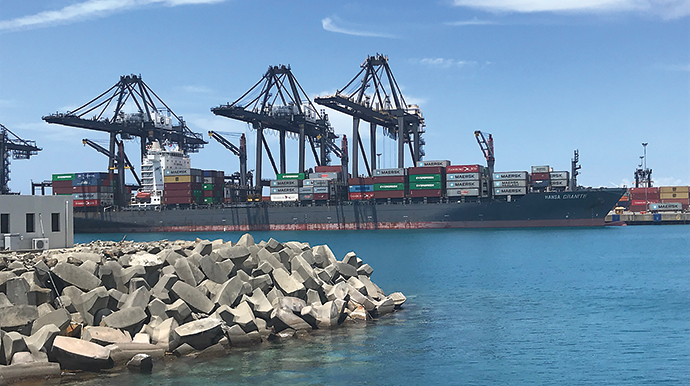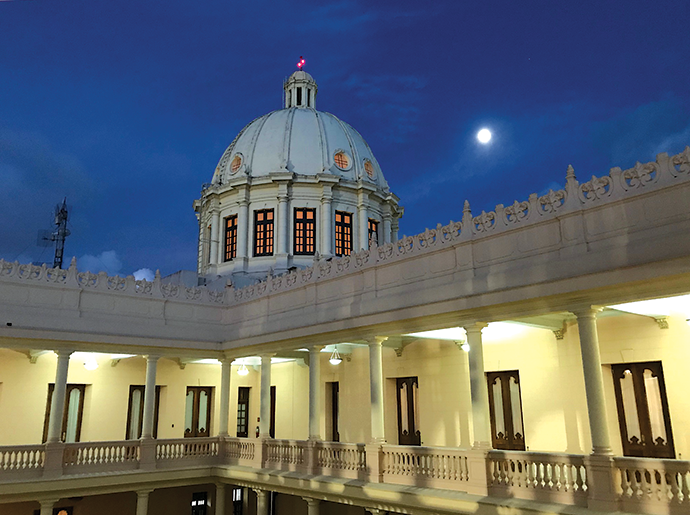More than 700 companies from around the world are part of a new way of doing business in the Caribbean. They located in free trade zones, but not just any free trade zones. They are in Dominican Republic FTZs. That means these companies can serve the entire Western Hemisphere in low-cost locations at or near airports and deep seaports in many cases and with all the cost benefits an FTZ affords (100% exemption from national and municipal taxes, in the Dominican Republic’s case). More than 2,000 products are exported from the FTZs to more than 130 countries worldwide, from cigars (the world’s leading exporter) to wool coats to candles.
These companies are in the Dominican Republic in the first place in part because it’s the leading recipient of foreign direct investment in the Caribbean and Central America and the leading economy in the Caribbean.
“We are investing approximately $250 million in our infrastructure, which includes additional land to develop our logistics park.”
The more than 70 FTZs that are part of the National Council of Export Free Zones (CNZFE), a government agency that promotes growth of the zones and their tenants, bring much more to the table than other zones in the region, including many in the Dominican Republic that are not members of the Council. They’re cities within cities in many cases, offering a range of services like a municipality would.
Smart City Santiago, for example, is home to more than 80 companies in a 2-million-sq.-m. (21.5-million-sq.-ft.) area that blends into its Santiago surroundings. Were it not for Smart City Santiago, company workers in many cases would have far less, if any, access to the CAPEX professional training center, financial and credit services, the CEGESTA Talent Management Center, a medical clinic and pharmacies, police and fire services, recreation areas and more. In September, Corporación Zona Franca Santiago, which operates the park, announced plans to develop a Technological Campus of high environmental sustainability with the capacity to create 4,200 new jobs. In addition, an Industrial Garden that serves as an urban lung to compensate for CO2 emissions and a residential area with a capacity for 5,000 homes are planned.
Value-Added Operations, and Ports
Textiles and apparel, medical and pharmaceutical devices, electronics, service industries like call centers — companies in these and other sectors are doing more value-added work in their Dominican Republic facilities than ever before.
“Medical device companies that used to assemble bags are now manufacturing components and more sophisticated products,” says Ebell De Castro, CNZFE’s manager of economic analysis, competitiveness division. “The are developing sterilization services and adding value to the products they are exploring. Nine of the 30 largest medical device companies have manufacturing operations in the Dominican Republic, including Medtronic and Johnson & Johnson.” About 50,000 people work in the sector at FTZ locations, he notes.

Global trade and logistics facilitator DP World’s only Caribbean port investment so far is a half hour east of the capital, Santo Domingo, in the Caucedo Free Zone in Punta Caucedo. It’s also home to the growing Caucedo Logistics Center with nearly 100 acres of land for build-to-suit warehouses. Like the nearby Las Américas FTZ, Caucedo is located minutes from Las Américas International Airport, affording these parks and their tenants multimodal logistics capability.
“We are investing approximately $250 million in our infrastructure, which includes additional land — 800,000 square meters [8.6 million sq. ft.] — to develop our logistics park,” says Ramón Badia, commercial director at DP World Caucedo. New crane investments will enable the Caucedo port to handle the largest cargo ships in the world, he adds. “This will attract the vessels that can’t go to just any port in the region,” he adds. It’s a natural logistics hub therefore, he relates, from which to distribute goods on smaller vessels throughout the region.
More coverage of FTZs mentioned here and of others in the Dominican Republic is planned for future issues of Site Selection, including tenants’ take on how they’re playing — and winning — the game of Caribbean logistics.

